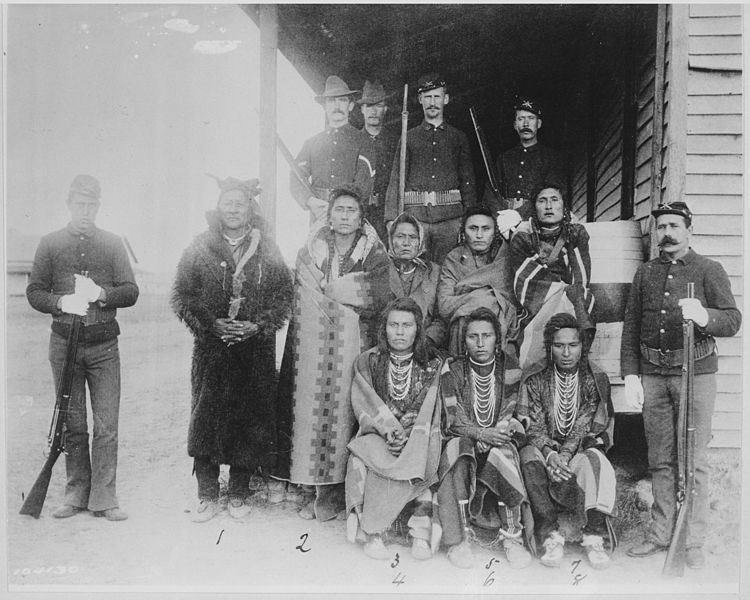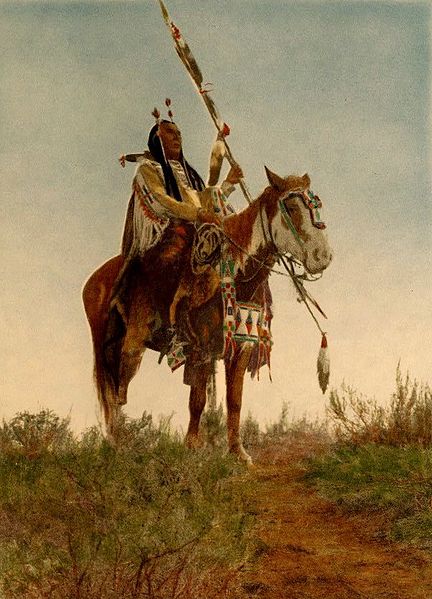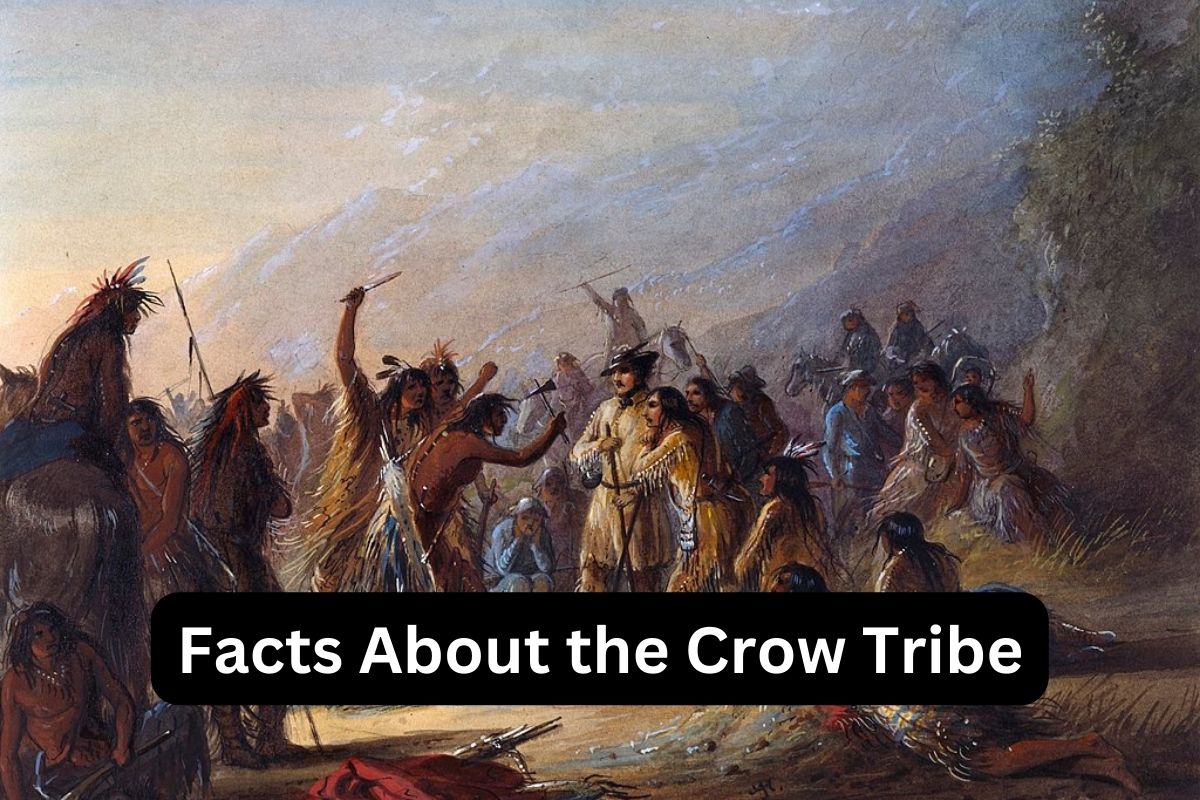The Crow Tribe, also known as the Apsáalooke Nation, is a Native American tribe located in southeastern Montana, United States. With a history dating back over 600 years, the Crow Tribe has a rich cultural heritage and a deep connection to the land and buffalo.
They follow a matri-lineal kinship system, where descent and inheritance are traced through the mother’s line. The tribe’s traditional lifestyle revolved around hunting buffalo and their skilled horsemanship.
Today, the Crow Tribe maintains its sovereignty and actively engages in tribal governance, economic activities, and cultural preservation to ensure the well-being and continuity of their community.
Crow Tribe Facts
1. The Crow Tribe, also known as the Apsáalooke Nation, is a Native American tribe located in southeastern Montana
The Crow Tribe, also known as the Apsáalooke Nation, is a Native American tribe located in southeastern Montana in the United States. The tribe’s name, Apsáalooke, translates to “children of the large-beaked bird” or “children of the crow.”
The name “Crow” was given to them by early European explorers and fur traders due to their use of crow feathers in their clothing and accessories.
Also Read: Facts About the Lakota Tribe
The Crow Tribe is recognized as a sovereign nation by the United States government and has its own government and constitution. The tribe is a member of the Montana-Wyoming Tribal Leaders Council and actively participates in tribal governance and inter-tribal affairs.

2. The Crow Tribe is one of the oldest tribal societies in North America
The Crow Tribe has a rich and ancient history that spans over 600 years. Archaeological evidence suggests that the ancestors of the Crow people lived in the Yellowstone River Valley region as early as the 15th century.
They were part of the larger Plains Indian culture, which encompassed various tribes living across the Great Plains of North America.
3. The Crow Tribe’s traditional territory covers a vast area that extends into present-day Wyoming, North Dakota, and South Dakota
The Crow Tribe’s traditional territory covered a vast area that included present-day Montana, Wyoming, North Dakota, and South Dakota. They were nomadic hunters and gatherers, following the buffalo herds that provided them with food, clothing, and materials for shelter and tools.
The buffalo was a central aspect of their culture, and they had a deep spiritual connection with this revered animal.
Also Read: Blackfoot Tribe Facts
The Crow Tribe’s traditional lifestyle was centered around their close relationship with the buffalo and the land. They moved in seasonal cycles, establishing temporary camps at strategic locations along the buffalo migration routes.
These camps were typically made up of buffalo-hide tipis, which were easily assembled and disassembled as the tribe followed the herds.
4. The Crow Tribe has a matrilineal kinship system, which means descent and inheritance are traced through the mother’s line
The Crow Tribe follows a matrilineal kinship system, which means that descent, inheritance, and clan membership are traced through the mother’s line. This matrilineal system is also reflected in the social and political structure of the tribe.
Women play a central role in decision-making processes and have a voice in tribal affairs. They hold significant positions of authority and influence within the community, including positions such as clan leaders, council members, and spiritual leaders.

5. The Crow Tribe is renowned for its horsemanship and equestrian culture
The Crow Tribe has a deep-rooted equestrian culture and is renowned for its horsemanship. Horses have been an integral part of their way of life for centuries. The introduction of horses to the Plains tribes, including the Crow, in the 17th century revolutionized their mobility, hunting strategies, and warfare tactics.
The Crow Tribe became skilled riders and horse breeders, developing a strong bond with these animals. Horses were not only a means of transportation but also companions in hunting and a symbol of prestige and wealth. The Crow people were known for their expertise in horse breeding and trading, and horses became an essential part of their economy and daily life.
The horse culture of the Crow Tribe is celebrated through various cultural practices, such as horse racing, horse parades, and traditional horse ceremonies. These events showcase the horsemanship skills of tribal members and reinforce the significance of horses within their cultural identity.
6. The Crow Tribe has a strong warrior tradition
The Crow Tribe has a long-standing warrior tradition. Historically, the Crow people were known as fierce warriors and skilled hunters. They developed effective military strategies and participated in inter-tribal conflicts, defending their territories and resources.
Crow warriors were highly respected within their society. They underwent rigorous training from an early age and honed their skills in horsemanship, archery, and hand-to-hand combat. Crow warriors played a significant role in conflicts with rival tribes, including the Lakota, Cheyenne, and Blackfoot, as well as in encounters with European settlers and explorers.
The bravery and prowess of Crow warriors were demonstrated in battle, and their exploits became the subject of many stories and legends. They were known for their distinctive war attire, which included feather headdresses, war shirts, painted shields, and beaded accessories. Crow warriors also possessed a strong spiritual belief system, often seeking guidance and protection from supernatural powers before going into battle.
7. The Crow Tribe has a tribal government that operates under a constitution and elects a tribal chairman and other officials
The Crow Tribe has a tribal government that operates under a constitution and elects its officials. The tribal government consists of a General Council, which is made up of all adult tribal members, and an Executive Branch headed by a tribal chairman.
The General Council is responsible for making important decisions and enacting tribal laws, while the Executive Branch oversees the day-to-day administration and implementation of policies.
The Crow Tribe also has its own court system, which handles legal matters and disputes within the tribe’s jurisdiction. The tribal court operates under the Crow Tribal Court Code and works to maintain law and order within the reservation boundaries.
8. The Crow Reservation, established in 1868, is the tribal land base of the Crow Tribe
The Crow Reservation was established in 1868 through the Fort Laramie Treaty between the United States government and the Crow Tribe. The reservation spans over 2.2 million acres of land in southeastern Montana, making it one of the largest reservations in the United States. The reservation is home to both enrolled tribal members and individuals from other Native American tribes and backgrounds.
The Crow Reservation is characterized by its diverse landscapes, including prairies, hills, valleys, and the scenic Bighorn Mountains. The tribe utilizes the land for various economic activities, such as agriculture, ranching, and natural resource development, including oil and gas exploration. These activities contribute to the tribal economy and provide employment opportunities for tribal members.
9. The Crow Tribe has faced various challenges throughout history
Throughout their history, the Crow Tribe has faced numerous challenges. Like many Native American tribes, the Crow people experienced conflicts with neighboring tribes, such as the Lakota and Cheyenne, as they vied for control of hunting territories.
The arrival of European settlers brought further challenges, including forced assimilation policies, loss of traditional lands, and the impact of diseases introduced by the newcomers.
Despite these challenges, the Crow Tribe has shown resilience and determination in preserving their cultural heritage and way of life. They have actively engaged in cultural revitalization efforts, promoting language preservation, traditional arts and crafts, and tribal ceremonies.
The tribe also emphasizes the importance of education to empower future generations and ensure the continuation of their cultural values and traditions.
10. Today, the Crow Tribe engages in a range of economic activities
Today, the Crow Tribe engages in a variety of economic activities to support its community and promote self-sufficiency. Agriculture plays a significant role, with tribal members involved in farming and cultivating crops such as wheat, barley, and hay. Ranching is another important economic activity, with cattle and sheep being raised on the reservation’s vast grasslands.
Additionally, natural resource development, particularly oil and gas exploration, has provided economic opportunities for the tribe. The Crow Tribe has entered into partnerships and agreements with energy companies to responsibly develop and utilize natural resources on their reservation, which generates revenue and employment for the tribe.
Tourism is also a growing industry on the reservation. Visitors have the opportunity to experience the tribe’s rich cultural heritage through cultural tours, powwows, and visits to historical sites. The Crow Fair, one of the largest Native American gatherings in the United States, attracts visitors from around the world and showcases the tribe’s traditional dances, arts and crafts, rodeo events, and traditional games.
